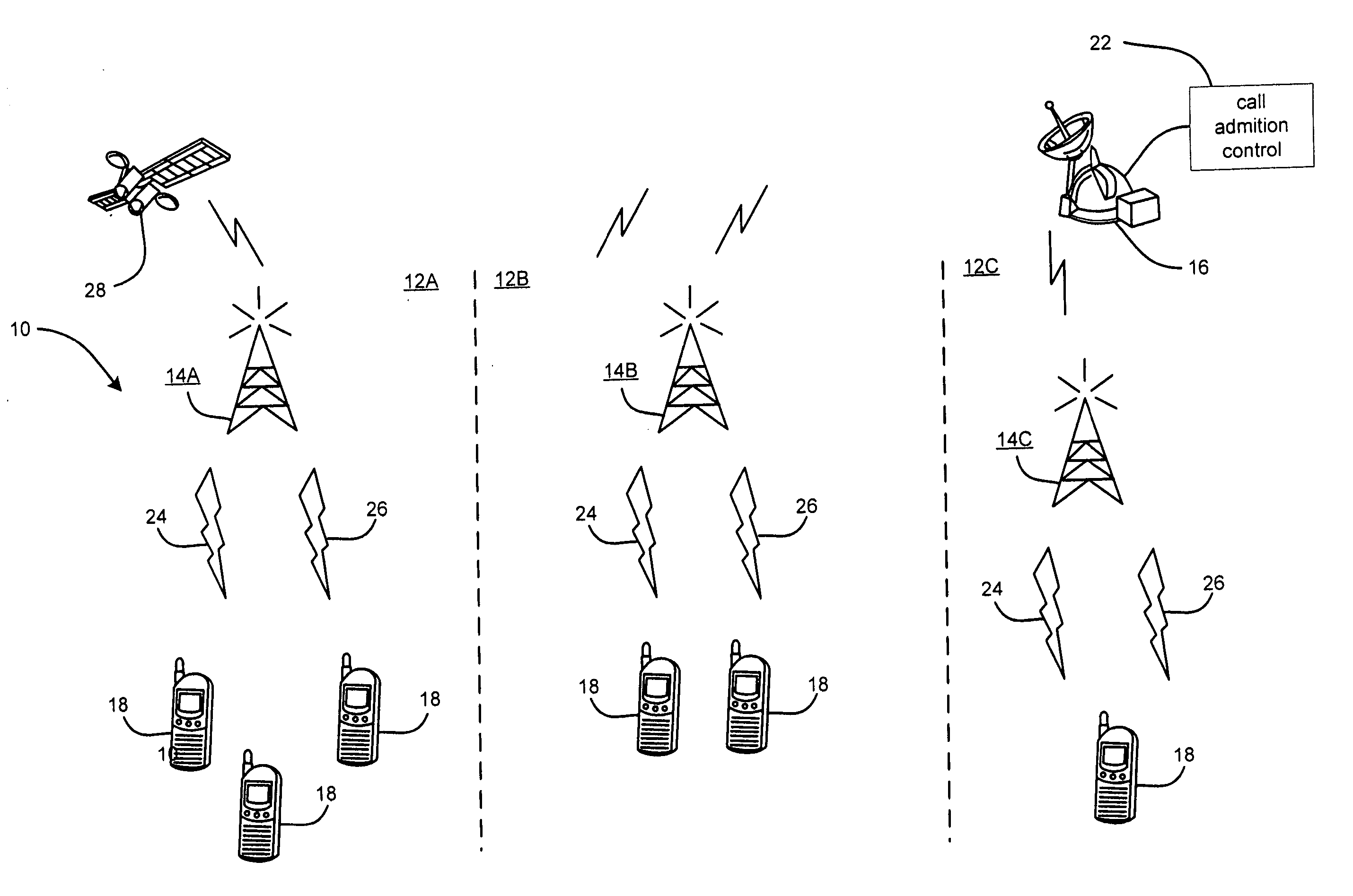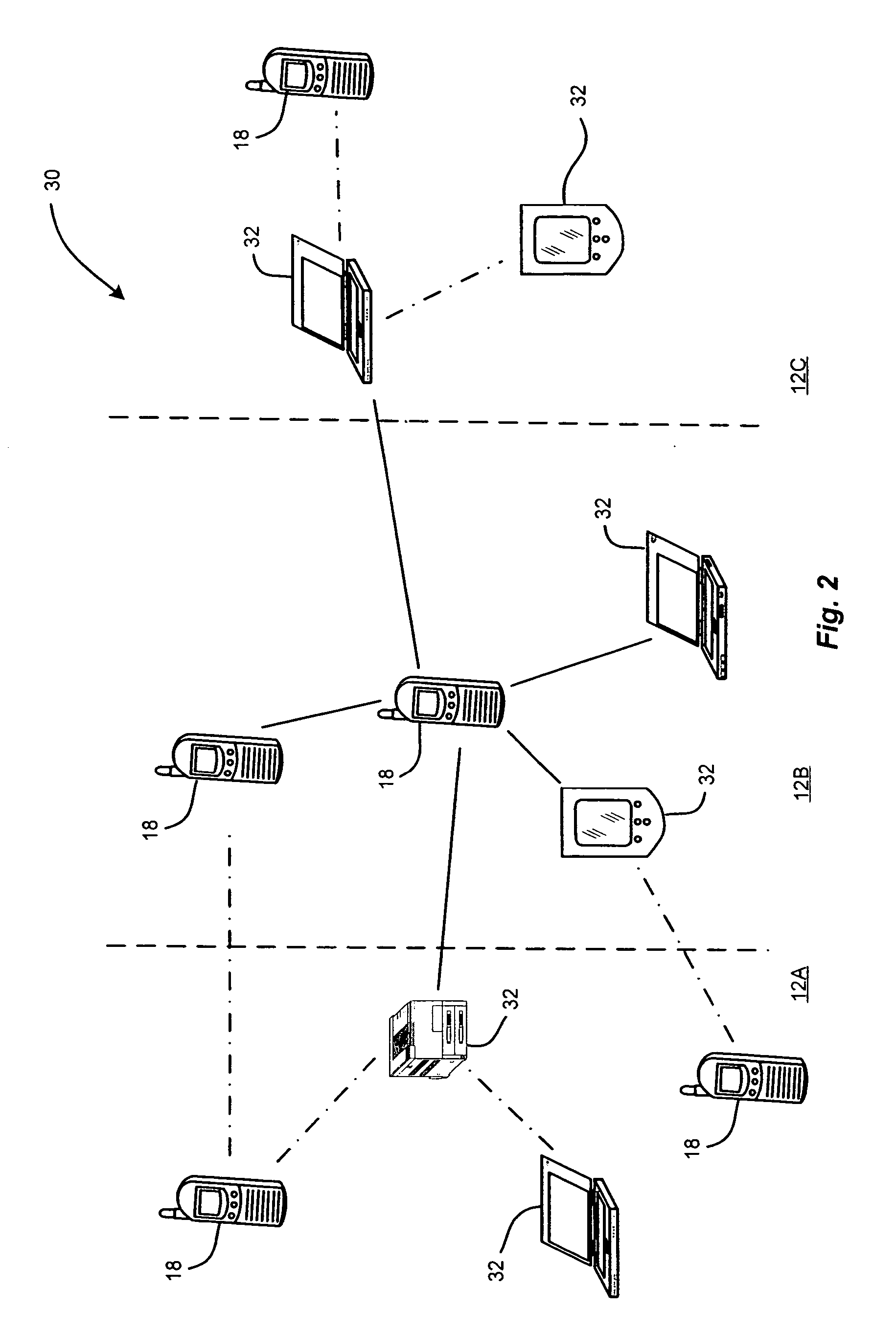System for and method of providing priority access service and cell load redistribution
a priority access and cell load technology, applied in the field of wireless communication systems, can solve the problem that the class 2 user may be blocked 50% of the time, and achieve the effect of optimizing the cellular network capacity, and reducing congestion
- Summary
- Abstract
- Description
- Claims
- Application Information
AI Technical Summary
Benefits of technology
Problems solved by technology
Method used
Image
Examples
Embodiment Construction
[0027] Preferred embodiments of the invention will now be described with reference to the accompanying drawings.
Overview
[0028] The present invention utilizes the strength of two separate technologies, cellular and ad hoc networking. A centralized scheme is utilized to send cell congestion, cell loading, or radio resource information to each cell phone using the existing cellular technology. A distributed scheme is adopted using a wireless ad hoc networking technology to interconnect all cellular devices of interest, and route cell location, cell congestion, cell loading, or radio resource information to a user. While much of the description that follows is in terms of the Bluetooth™ ad hoc networking protocol, said description is not meant to be limiting. Artisans will appreciate that other wireless ad hoc networking technologies can be used alternatively and are within the scope of the present invention. The rationale for selecting the Bluetooth technology to perform ad-hoc netw...
PUM
 Login to View More
Login to View More Abstract
Description
Claims
Application Information
 Login to View More
Login to View More - R&D
- Intellectual Property
- Life Sciences
- Materials
- Tech Scout
- Unparalleled Data Quality
- Higher Quality Content
- 60% Fewer Hallucinations
Browse by: Latest US Patents, China's latest patents, Technical Efficacy Thesaurus, Application Domain, Technology Topic, Popular Technical Reports.
© 2025 PatSnap. All rights reserved.Legal|Privacy policy|Modern Slavery Act Transparency Statement|Sitemap|About US| Contact US: help@patsnap.com



